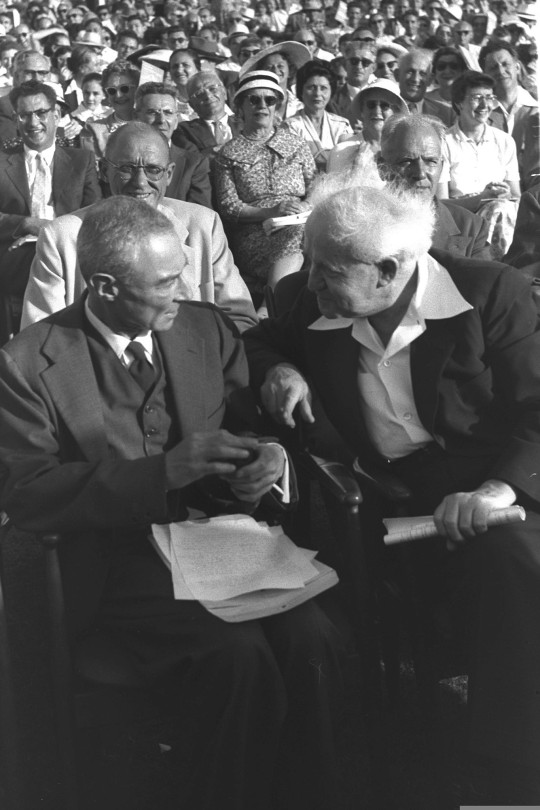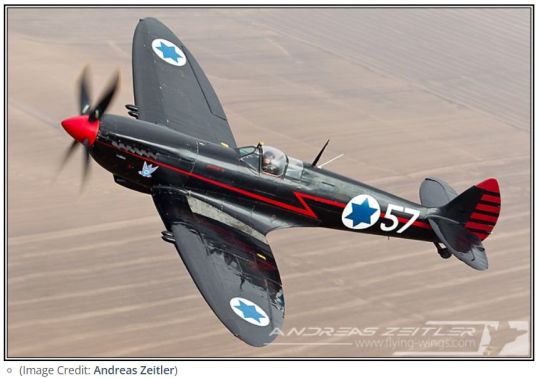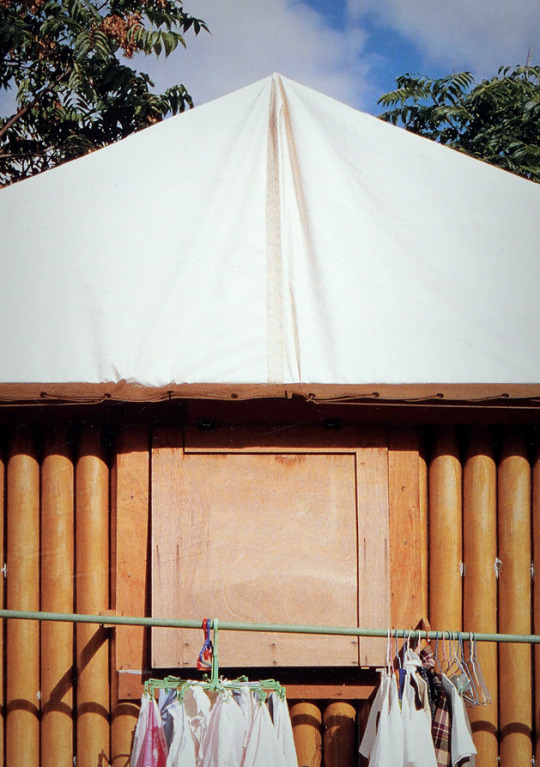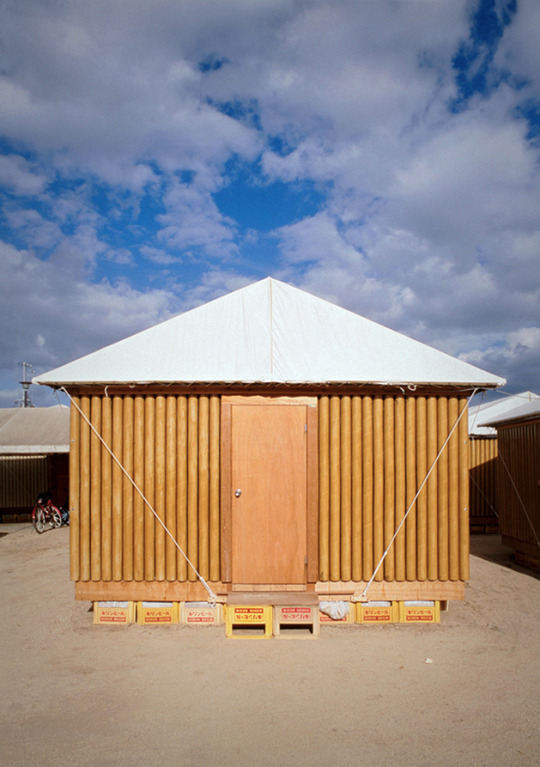#weizman
Explore tagged Tumblr posts
Text

Richard Hamilton, Maps of Palestine, (digital print on canvas; detail), 2011, «PICPUS», No. 32 – Spring 2024, (back cover), Edited by Charles Asprey and Simon Grant, Design by Studio Ard (now Studio Ardworks) – Chuard & Nørregaard [Art: © Richard Hamilton]

(via Peter Foolen, greg.org)
(plus: Richard Hamilton, Maps of Palestine, (digital print on canvas), 2011, photo by Al-Madani/Flickr from the 4th Moscow Biennale, September 22 – October 30, 2011)
Serpentine Map Marathon 2010: Richard Hamilton & Eyal Weizman – Political Plastic (Uploaded on Jun 1, 2011)
youtube
#graphic design#art#map#video#interview#exhibition#magazine#back cover#picpus#richard hamilton#charles asprey#simon grant#eyal weizman#serpentine gallery#studio ard#studio ardworks#guillaume chuard#2010s#2020s
62 notes
·
View notes
Text
Hi all, if you don’t already know, Cliff Weizman, CEO of Speechify, illegally scraped works off the Ao3 without authors consent and uploaded them to his for-profit site, WordStream.
Please sign this petition to hold him accountable for his actions and get these works removed.
78 notes
·
View notes
Text
by Martin Kramer

The text may help to explain a remark made by Israeli prime minister David Ben-Gurion to the Israeli cabinet, after he’d met with Oppenheimer at the latter’s request. Ben-Gurion said he “had the impression that some sort of Jewish spark lit up the man.”
That impression may have originated in Oppenheimer’s speech. Ben-Gurion certainly heard it. The prime minister delivered the keynote at the same dedication, and sat with Oppenheimer in the front row. Oppenheimer, in his own speech, made several references to Ben-Gurion’s remarks. (When Oppenheimer said “It is not only the Prime Minister of Israel who has his difficulties,” he was referring to Ben-Gurion’s admission that he didn’t understand much about physics.)
What’s the source for Oppenheimer’s text? Oppenheimer spoke from notes, but he didn’t have a copy of the speech as he delivered it. “I gave my notes on the ceremonial talk to your press officer,” he wrote to Meyer Weisgal, his host, “and have no record at all of what I said.” At Oppenheimer’s request, the Weizmann Institute sent him a tape with the extract of his speech, secured from the Voice of Israel, which had broadcast the proceedings. The following text is a transcription of the delivered speech, from Oppenheimer’s papers. While the Jerusalem Post reported a few portions of his remarks the day after he spoke, the speech is published here in full for the first time.
I’ve appended an extract from another speech that Oppenheimer gave for the Weizmann Institute on December 2, 1958, at its annual fundraiser at the Waldorf-Astoria Hotel in New York. There Oppenheimer reflected on his visit to Israel the previous May. It complements the Rehovot speech.
Some of the persons mentioned by Oppenheimer in the two speeches:
Niels Bohr, Danish physicist and 1922 Nobel laureate. Although baptized a Lutheran, his mother came from a distinguished Jewish family, so he fled Denmark during the Nazi occupation. He later assisted Oppenheimer in the Manhattan Project. Bohr had already lent his prestige to the Weizmann Institute during an earlier visit in 1953, and he also spoke at the 1958 dedication, for which the Institute commissioned his bust.
Meyer Weisgal, Zionist author and fundraiser, and confidant of the late Chaim Weizmann. At this time, he was chairman of the executive council of the Weizmann Institute. He would become the person in Israel closest to Oppenheimer.
Benjamin Bloch, physicist by training, administrator of the Weizmann Institute, and a friend of Bohr and Oppenheimer. (Felix Bloch, the Swiss-American physicist and 1952 Nobel laureate, also attended the 1958 dedication, but Oppenheimer’s reference to “Dr. Bloch” clearly refers to Benjamin.)
Abba Eban, Israeli statesman. In late 1958, he was at the end of his service as Israeli ambassador to the United States and chief delegate to the United Nations, and had been named the next president of the Weizmann Institute.
Ernest (later Lord) Rutherford, New Zealand-British physicist and 1908 Nobel laureate, a friend to Chaim Weizmann in Manchester.
20 notes
·
View notes
Text
Lesser evil arguments are now used to defend anything from targeted assassinations and mercy killings, house demolitions, deportation, torture, [15] to the use of (sometimes) non-lethal chemical weapons, the use of human shields, and even ‘the intentional targeting of some civilians if it could save more innocent lives than they cost.’ [16] In one of its more macabre moments it was suggested that the atomic bombings of Hiroshima might also be tolerated under the defence of the lesser evil. Faced with a humanitarian A-bomb, one might wonder what, in fact, might come under the definition of a greater evil. Perhaps it is time for the differential accounting of the lesser evil to replace the mechanical bureaucy of the ‘banality of evil’ as the idiom to describe the most extreme manifestations of violence. Indeed, it is through this use of the lesser evil that societies that see themselves as democratic can maintain regimes of occupation and neo-colonization.
15: Relying on what is essentially a proportionality analysis, the Israeli Commission of Inquiry into the Methods of Investigation of the General Security Service Regarding Hostile Terrorist Activity, otherwise known as the Landau Commission, of 1987 reaches the conclusion that the prohibition on torture is not absolute, but is rather based, in its own words, upon the logic of ‘the lesser evil’. Thus, ‘the harm done by violating a provision of the law during an interrogation must be weighed against the harm to the life or person of others which could occur sooner or LATER’ [upper-case in the original]. US Department of Justice attorney John Yoo similarly referred to a balance of interests when authorizing forms of torture during the Bush Administration. Itamar Mann and Omer Shatz, ‘The Necessity Procedure: Laws of Torture in Israel and Beyond, 1987–2009’ [PDF]
16: Ibid., 3.
the least of all possible evils – eyal weizman
gazafunds.com
#pdf link is a redirect to the one thats available on yale's website btw.#you can open it on firefox if you dont want to download it to still read it#the least of all possible evils#eyal weizman#cryptcites
2 notes
·
View notes
Text
"In the last few weeks, demonstrations have been permitted to take place, under strict rules on what can be said. ‘From the river to the sea, Palestine will be free’ has been banned as a slogan. In Bavaria, it is being prosecuted as incitement on par with ‘Heil Hitler’. In recent weeks even the slogan, ‘from the river to the sea, we demand equality’ has been banned by police, as well as any reference to ‘genocide’. At a demonstration in Berlin, a person holding a sign that read ‘from XX to XX, XX will be free’ is being prosecuted for possible incitement. The police announced that they would break up a registered demonstration if the crowd chants ‘stop the war’. Calling for ceasefire is equated with denying Israel its right to defend itself, and is therefore synonymous with wanting Israeli Jews to be murdered."
#Once again Germany Defines Who is a Jew#George Prochnik#Emily Dische-Becker#Eyal Weizman#I'm not German but keeping an eye on the civil and cultural discourse of Germany in these matters is of interest#Casual references to the right wing of Germany having infiltrated the police are interesting as someone who doesn't know much#Israel#Palestine#Germany
10 notes
·
View notes
Text

Why the Black Spitfire?
The Spitfire got into Israeli hands during the 1948 War of Independence and by the end of the war, most of the IAF's fighters were Spitfires of different models.
The pictured Black Spitfire (originally No. 2057) arrived in Israel in 1949 after the war. It served with the 101 in the same way as other Spitfires: reconnaissance and escort missions.
When most Spitfires were sold to Burma in 1954, Ezer Weizman, then commander of the Ramat David air force base and future President of Israel, argued in favour of keeping some units in Israel. The Spitfire was painted black with the number 57. Even though it was supposed to be used for training purposes, many considered the aircraft to be personally owned by Ezer Weizman and the plane was flown in numerous parades in Israel, becoming known as "Weizman's Black Spit".
9 notes
·
View notes
Text


January 7th, 2023
Weizman National Museum of American Jewish History, Philadelphia, Pennsylvania
#photography#artifacts#history#jewish history#weitzman#weitzman museum#Weizman National Museum of American Jewish History#torah scroll#torah#map#hebrew#artefacts#philadelphia#pennsylvania#pa#city of brotherly love
2 notes
·
View notes
Text






Palestine As Metaphor, Mahmoud Darwish / The Palestine Laboratory, Anthony Loewenstein / The Sea Cloak & Other Stories, Nayrouz Qarmout / Songs For The Dead And The Living, Sara M Saleh / Hollow Land, Ewal Weizman / Freedom is A Constant Struggle, Angela Davis
BOOKS I'VE READ / AM READING / GOING TO READ ABOUT PALESTINE
240 notes
·
View notes
Note
can you point me towards the post from Naomi Klein's book let them drown?
Hi anon, do you mean this one:
Article link:
18 notes
·
View notes
Note
got a link to the article about the israeli army and deleuze?
104 notes
·
View notes
Text
⚠️ JERUSALEM TERROR ATTACK SUMMARY: Three people were killed and six were wounded, two of them seriously, in a terror shooting attack at the entrance to Jerusalem this morning.
At around 7:40 a.m. two terrorists got out of a vehicle on Weizman Street at the main entrance to the capital & opened fire at people at a bus stop.
Police said two off-duty soldiers & an armed civilian in the area returned fire, killing the two terrorists.
The attackers were named as brothers Murad Namr, 38, and Ibrahim Namr, 30, from East Jerusalem.
The pair were Hamas members and jailed for terror activity.
Murad was jailed between 2010 and 2020 for planning terror attacks under directions of terror elements in the Gaza Strip and Ibrahim also was jailed in 2014 for terror activity.
The terrorists were armed with an M-16 assault rifle and a handgun. A police search of the vehicle found large amounts of ammunition. - ToI
67 notes
·
View notes
Text
August 2023 reading
Books:
Langston Hughes, Selected Poems
T. H. White, The Sword In The Stone
T. H. White, The Witch In The Woods
T. H. White, The Ill-Made Knight
T. H. White, The Candle In The Wind
Articles:
Lisa Borst, Ari M. Brostoff, Cecilia Corrigan, Jon Dieringer, A. S. Hamrah, Arielle Isack, Mark Krotov, Jasmine Sanders, Christine Smallwood, Who Was Barbie?
Lev Grossman, The gay Nabokov
Yasha Levine, Immigrants as a Weapon: Global Nationalism and American Power
Sophie Lewis, Cthulhu plays no role for me
Gail Omvedt, The doubly marginalised
John Semley, Oppenheimer and the Dharma of Death
Bassam Sidiki, Severances: Memory as Disability in Late Capitalism
towardrecomp, Fidelidad En La Tormenta: Part 1
Eyal Weizman, The Art of War: Deleuze, Guattari, Debord and the Israeli Defense Force
Short stories:
Tamsyn Muir, Chew
Tamsyn Muir, The Unwanted Guest
Rebecca Fraimow, Further Arguments In Support Of Yudah Cohen's Proposal To Bluma Zilberman
Rebecca Fraimow, Gitl Schneiderman Learns To Live With Her In-Laws
92 notes
·
View notes
Photo








1072. Shigeru Ban /// Temporary Paper Log Houses /// Nagata, Kobe, Hyogo, Japan /// 1995
OfHouses presents: Japanese Architects, part I - Shigeru Ban. (Photos: © Shinkenchiku-sha. Source: ‘Jutakutokushu’ 11/1995; Shigeru Ban and Kartikeya Shodhan, 'Paper-Tube Housing', Perspecta, Vol. 34 / 2003; Belén García, 'Earthquake architecture: new construction techniques for earthquake disaster prevention', New York: LOFT and HBI, 2000; Manuel Gausa, 'Housing + Single-Family Housing', Barcelona: Actar, 2002; Philip Jodidio, ‘Shigeru Ban, 1957: Architecture of Surprise’, Köln: Taschen, 2012; Heidi Zuckerman Jacobson, Claude Bruderlein, Naomi Pollock, Eyal Weizman, 'Shigeru Ban: Humanitarian Architecture', Aspen: Aspen Art Museum, 2014; 'The inventive work of Shigeru Ban', Sidney: Sherman Contemporary Art Foundation, 2017; Shigeru Ban Architects Archive.) — This project will be published in our upcoming book: Japanese Fields | OfHouses.
#Shigeru Ban#Japan#90s#OfHouses#oldforgottenhouses#www.ofhouses.com#thecollectionofhouses#JapaneseArchitects1
115 notes
·
View notes
Text
(Subtitled video)

The Story of Spitfire 57
The story of Spitfire 57, also known as, “Ezer Weizman’s Black Spit”, should be told from the middle, rather than the beginning. Not from its first days during the Second World War and not from the day it took off once again into the blue skies six months ago, rather from the moment that kept the Spitfire alive, when it was decided to keep it in Israel. During WWII, the late Ezer Weizman that later served as the Commander of the IAF and President of Israel, was posted in the Royal Air Force’s Faeed Airbase in the Sinai Peninsula, where the airbase commander flew a painted black Spitfire.
Weizman remembered the uniquely painted plane, and in 1954, while serving as Ramat David Airbase Commander, after it was decided to sell most of the Spitfire airplanes owned by the IAF to Burma, he requested that Israel kept one for its legacy and no less, for his own use.” A Commander should have a unique characteristic in order to stand out. Such a personal identity sticks to the commander and accompanies his path and becomes a sort of identity card”, wrote Weizman in his autobiography. “‘The Black Spitfire’ was that characteristic that made me different, it was recognized in the entire IAF… it was an airplane that smelled of history. Both in WWII and in our ‘small war’, the War of Independence, to a large extent it determined the outcome of the aerial wars”.
The “Black Spit” accompanied Weizman to every place and even after he retired, the former commander continued to fly ‘Black Spit’ in different aerial demonstrations in which the airplane still takes part today: Independence Day celebrations, Jewish holidays, Wing ceremonies and special aerial demonstrations. Thus, it was only natural that during Weizman’s funeral in April 2005, it was decided to conduct a “Black Spit” flight over the cemetery where he was buried.
Sources:
* jfc.org.il/en/news_journal/95144-2/
https://warbirdsnews.com/warbirds-news/ezer-weitzmans-black-spitfire-air.html
2 notes
·
View notes
Text
About Chuck Schumer
Americans, you can contact your Democratic senators and tell them you are not contributing money to the Democratic Party until he is removed from leadership. (Doesn't matter if you were or ever have. It's not a lie if you aren't going to contribute money.) Stress that this is their chance to regain *some* trust but that the entire party and Senate is suspected of staging this--because they are.
You can also tag them on social media, as well as accounts for groups of Democrats, including Senate Democrats and The Democrats (the congressional reps do not have the power to remove him).
In addition, although this man is avoiding his constituents right now and I believe still has his office voicemail turned off--he is going on a book tour starting next week!!! An in-person book tour!!! Surely no one will harass Senator Coward as he shills his book after just betraying his own voters and the rest of America.
The book tour schedule btw

adding alt text here because I need to see it to type it:
Mon 3/17 7pm Central Library, Baltimore
Wed 3/19 Politics & Prise, DC
7pm Thursday 3/20 at the Weizman, DC
Sunday 3/23 3pm Moss Theatre Santa Monica, CA
Mon 4/21 MJCCA Atlanta 7:30 pm
wouldn't be surprised if he canceled, tbh
3 notes
·
View notes
Text
From an infrastructural point of view, a splintering form of colonial occupation is characterized by a network of fast bypass roads, bridges, and tunnels that weave over and under one another in an attempt at maintaining the Fanonian “principle of reciprocal exclusivity.” According to Weizman, “the bypass roads attempt to separate Israeli traffic networks from Palestinian ones, preferably without allowing them ever to cross. They therefore emphasize the overlapping of two separate geographies that inhabit the same landscape. At points where the networks do cross, a makeshift separation is created. Most often, small dust roads are dug out to allow Palestinians to cross under the fast, wide highways on which Israeli vans and military vehicles rush between settlements.
Under conditions of vertical sovereignty and splintering colonial occupation, communities are separated across a y-axis. This leads to a proliferation of the sites of violence. The battlegrounds are not located solely at the surface of the earth. The underground as well as the airspace are transformed into conflict zones. There is no continuity between the ground and the sky. Even the boundaries in airspace are divided between lower and upper layers. Everywhere, the symbolics of the top (who is on top) is reiterated. Occupation of the skies therefore acquires a critical importance, since most of the policing is done from the air. Various other technologies are mobilized to this effect: sensors aboard unmanned air vehicles (UAVs), aerial reconnaissance jets, early warning Hawkeye planes, assault helicopters, an Earth-observation satellite, techniques of “hologrammatization.” Killing becomes precisely targeted.
Such precision is combined with the tactics of medieval siege warfare adapted to the networked sprawl of urban refugee camps. An orchestrated and systematic sabotage of the enemy’s societal and urban infrastructure network complements the appropriation of land, water, and airspace resources. Critical to these techniques of disabling the enemy is bulldozing: demolishing houses and cities; uprooting olive trees; riddling water tanks with bullets; bombing and jamming electronic communications; digging up roads; destroying electricity transformers; tearing up airport runways; disabling television and radio transmitters; smashing computers; ransacking cultural and politico-bureaucratic symbols of the proto-Palestinian state; looting medical equipment. In other words, infrastructural warfare. While the Apache helicopter gunship is used to police the air and to kill from overhead, the armored bulldozer (the Caterpillar D-9) is used on the ground as a weapon of war and intimidation.
Achille Mbembe - Necropolitics
37 notes
·
View notes